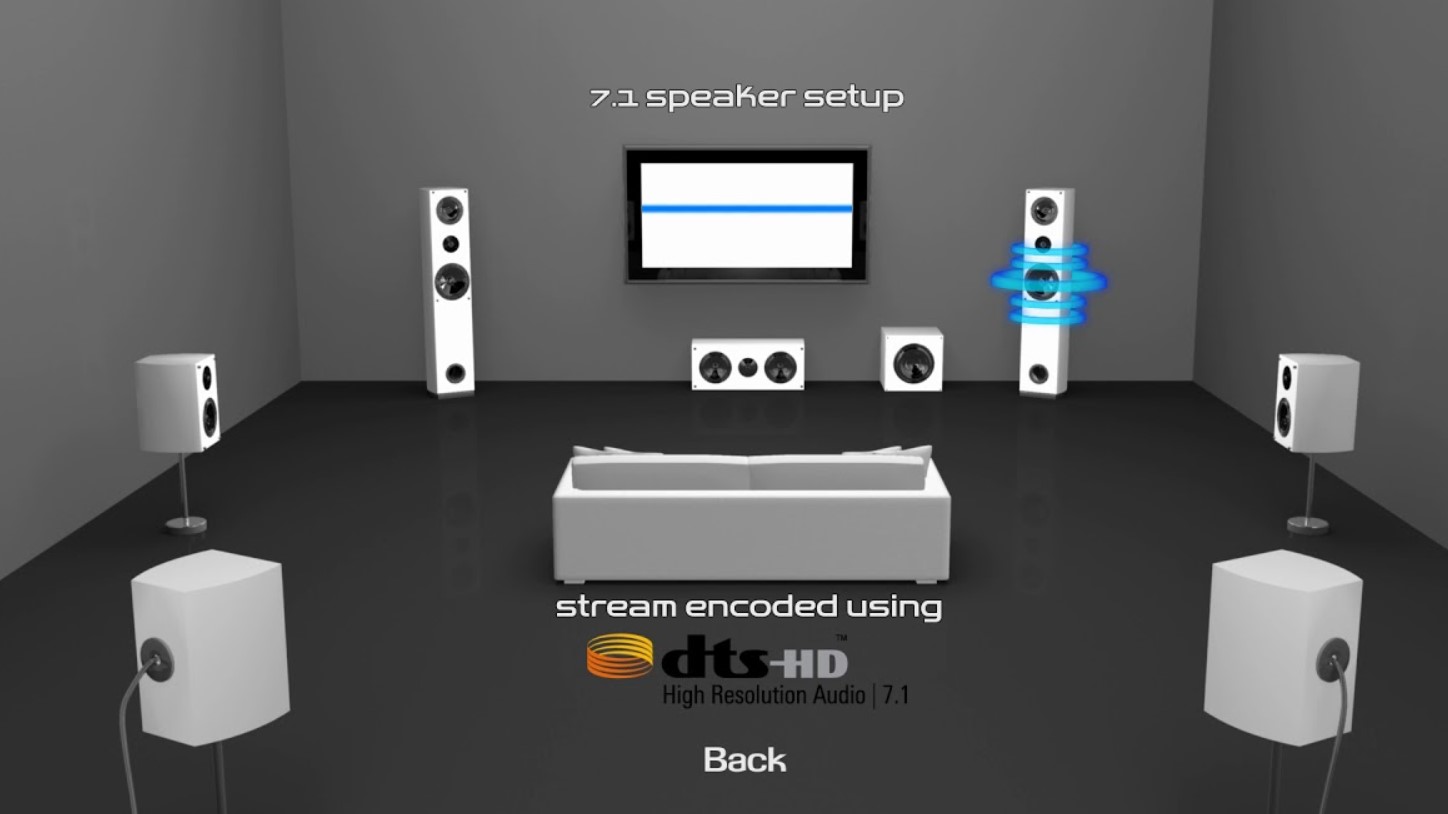Spent a fortune on top-tier speakers and a state-of-the-art AV receiver, yet your home theater doesn’t match up to your friend’s immersive sound experience? The culprit isn’t always a technical glitch or a faulty wire. Often, it’s something as simple yet overlooked as speaker placement. Improper positioning can hinder even the most advanced 5.1, 7.1, or Dolby Atmos systems from delivering their best. If you’re puzzled about where to place your speakers for optimal sound, you’re not alone. Dive in to discover the secrets of perfect speaker placement and maximize your home theater’s potential.
What’s Surround Sound 5.1
If you’re still asking yourself the meaning of 5.1 with surround sound, it’s time to unlock the mystery.
Surround Sound 5.1 is one of the most commonly used home theater sound systems, giving a highly immersive sound and listening experience. The number five (5) in front of the word “Surround Sound” means the number of speaker channels the system comprises. In contrast, the one after the point shows the number of included subwoofers that deliver audio of a lower-frequency range.
Not so paradoxical now, is it?
So, let’s take the next step of knowing its speakers and their placement.
5.1 speaker placement
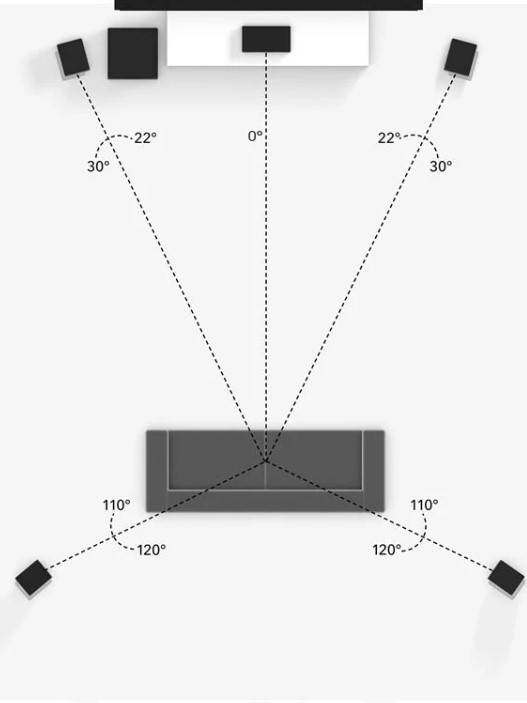
The main speakers for the 5.1 surround sound are the front-central speaker, two front-left and front-right speakers, two ear-level side speakers, and one subwoofer. Now to make the best use of your 5.1 surround system, you need to put these speakers and subwoofer in a place where they can provide an optimal listening experience.
Here’s how you can do it:
Front Central Speaker:
If there is anything of foremost importance in a 5.1 surround system, it’s the position and placement of the front-central speaker. Since this speaker is responsible for delivering the audio of dialogues, it must be placed directly above or under the TV facing your seating position; otherwise, the video and audio will give a delusion of falling out of sync.
Furthermore, you may also ensure not to place the speaker too far from the screen, as it will give the impact of missing audio, bringing down the whole immersive listening experience of the home theater.
Another thing to look at during the front central speaker placement is the position of the tweeters and woofer.
Now, what’s this gibberish?
Tweeters are the small speaker cones in the speakers, which you need to level with your ear or listening position and with the left and right speakers, if possible; for optimal sound delivery.
Checking the Front speakers’ efficiency:
After placing the speaker as per the aforementioned details, you might want to know whether or not it’s the best place to put your speaker; what’s the sound output from the set speaker space?
To do so, you need to bring your ears to work!!
It’s tricky and crucial to determine whether the speaker placement is suitable for your ears. Play any music or movie with dialogues and effects to be delivered through the front speaker, and see if it sounds alright.
Where to put the Front-Left and Front-Right speakers?
Most sound and audio delivery is made from the mighty Front-left and Front-right speakers. These speakers cover middle and high-range frequency audio, making most of the audio you’re listening to. Now, these two speakers need to complement each other.
The front-left and front-right speakers must be placed at an equal distance from the front-central speaker and listening position. The suggested angle between the speakers and the listening position should be 22-30 degrees and may vary depending on the room size.
Surround Speakers:
If you want your home theater to have the best surround sound experience, you must ensure that the surround sound speakers are placed in the right spot. You can achieve it by placing the surround speakers to the left and right of your seating position. The recommended angle for placing speakers from your seating position is 110-120 degrees. Sometimes you have to shift the speakers slightly depending on your room space and seating position.
In addition to this, the position of the surround speakers should be slightly above the ground.
And Boom!
Get ready for an enveloping audio experience.
Where to put the subwoofer?
The subwoofer should be the least of your worries, as it has no specific rules for placement. The reason behind this is that the low-range frequencies are not directional. So, you can place it anywhere in the room.
However, placing a subwoofer in the corner can deteriorate your home theater, as that’s where the audio will start to bounce and create disruption. Furthermore, placing it at an equal distance between the two ends of the room will create standing waves and varying volumes across the room. So, it’s best to place it on one side of the room.
What is Surround sound 7.1
7.1 surround sound system is similar to a 5.1 surround system with two additional rear speakers and, in total, eight channels. Figure seven shows the number of speakers, and one shows the number of subwoofers. Above All, you can quickly build the 7.1 surround sound system on your existing 5.1 sound system.
Now, let’s find out how and where to place the speakers for an optimal surround sound experience.
7.1 Speaker placement
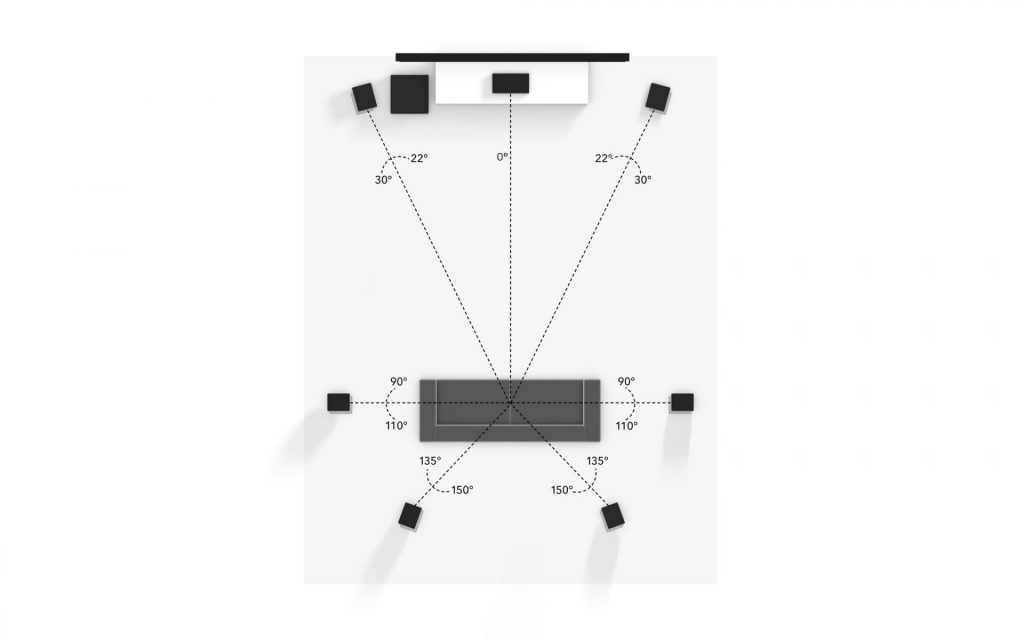
The placement of the front-central speaker, front-right and front-left speakers, and surround speakers is the same as mentioned for the 5.1 surround sound system. So, if you have already set a 5.1 surround sound system, you only need to know about the rear speakers.
Rear speakers placement:
The rear speaker placement may vary depending on the room size and seating position; however, an ideal position for the rear speaker is about 135-150 degrees angle from your TV or front-central speaker.
Dolby Atmos Surround Sound
Dolby Atmos is the best surround sound audio format to bring your home theater to life. It can be easily built on your 5.1 and 7.1 traditional surround sound speaker by adding Dolby Atmos compatible AV receiver and two ceiling or upward-firing speakers.
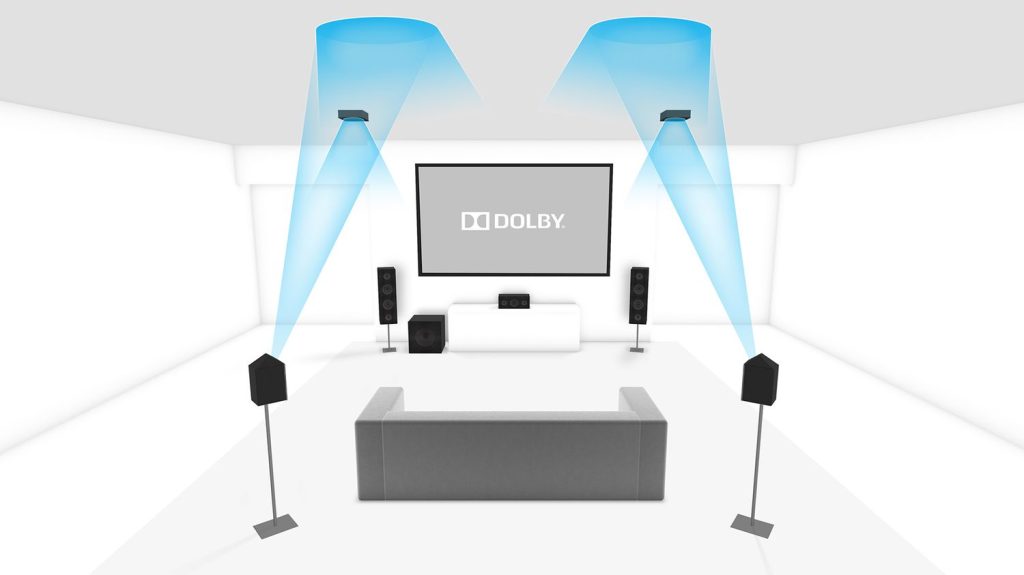
Let’s see how you can place your speakers to get the best surround sound experience.
Speaker placement for Dolby Atmos
The speaker placement of the Dolby Atmos is similar to a 7.1 surround sound placement, with two or four additional upward-firing speakers and ceiling speakers. So, if you have a basic 5.1 or 7.1 surround system, you can get the Dolby Atmos setting with a few additional speakers. Now, two Dolby Atmos layouts depend on the basic surround sound 5.1 and 7.1 system.
5.1.2 and 7.1.2 Dolby Atmos speaker layout:
This Dolby Atmos layout uses two upward-firing Atmos-enabled speakers, which produce a 3D enveloping sound effect. This speaker set is easily built on the existing 7.1 system and is best for rooms with a height of no more than 14 feet.
5.1.4 and 7.1.4 Dolby Atmos speaker layout
This Dolby Atmos setup parallels the 5.1 and 7.1 surround sound systems. It comes with two pairs of upward-firing speakers. You need to install one pair a few feet to the front of your listening position and one at an equal distance to the back side. It’ll create a strong and better 3D sound and sound-enveloping experience.
User Queries and Their Solutions
1. Rear Speaker Placement for 5.1 with Limited Space: Query: A user, gado45, sought advice on rear speaker placement for a 5.1 setup due to limited space behind the main sitting position. They inquired about the best location and height for bookshelf speakers in such a scenario.
Key Solutions:
- altpensacola clarified that rear speakers are not recommended to be placed behind in a 5.1 setup.
- Leeliemix suggested placing the surrounds slightly back to the sides or directly to the sides. They also mentioned that rear surrounds are for 7.1 systems.
- Wardog555 recommended angles of 110 to 120 degrees for 5.1 setups.
- Loonster proposed flipping the room setup 180 degrees to allow better speaker placement.
2. Surround Speaker Placement Dilemma: Query: A user was uncertain about where to place two surround speakers, considering options marked by black and red dots.
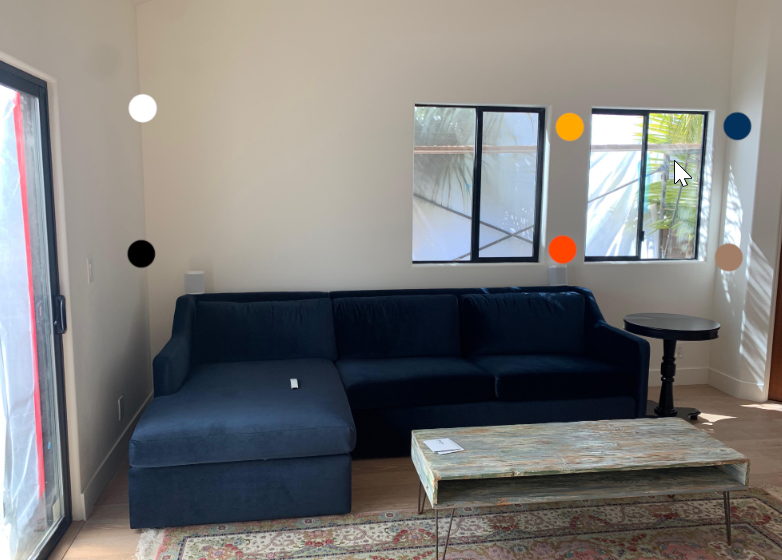
Key Solutions:
- nonametofame1 suggested the black & brown spots, with the bottom of the speaker about 1ft above ear level.
- kevi959 recommended the black and brown spots but also suggested moving the couch for better sound distribution.
- movie50music50 emphasized the importance of placing the speakers at a height that ensures sound isn’t blocked by listeners’ heads.
3. 5.1 Speaker Placement: Query: A user was confused about the optimal placement for surround speakers in a 5.1 setup due to varying opinions.
Key Solutions:
- moonthink mentioned that there’s flexibility in surround placement for 5.x setups, suggesting an angle of 110-120 degrees off-axis from the main listening position.
4. Ideal Surround Speaker Height/Placement: Query: A user sought advice on the ideal height and placement for surround speakers.
Key Solutions:
- concentus7 emphasized the importance of ensuring that every listener has a “line of sight” to the speaker’s tweeter. They explained that placing surrounds at ear level might result in sound being blocked by someone’s head.
- JamestownCA simply suggested placing them at ear level.
- TyGamer125 pointed out that the old recommendation of placing speakers 2 feet above ear level is outdated, especially with the advent of object-oriented audio systems like Atmos.
5. Surround Speaker Placement in a 5.1 Setup: Query: A user was unsure about the height and distance from the listening position for surround speakers in a 5.1 setup.
Key Solutions:
- Stillacableguy humorously pointed out that while furniture might block low-placed speakers, other people’s heads can block ear-level speakers.
- hubbletrouble shared a tool for calculating speaker positioning.
6: How high should surround speakers be mounted?
The user is seeking advice on the optimal height for mounting surround speakers in a 5.1 or 7.1 system.
- The general consensus is that surround speakers should be placed a couple of feet above the listening position for a more diffuse sound field. However, if implementing a Dolby Atmos system, the surrounds should be at ear level.
- Some users have their speakers mounted about 2 feet above ear level and angled towards the listening position, while others follow Dolby guidelines which state at ear level.
- The tweeter’s position is also discussed, with some users suggesting it should be 1-2 feet above ear level.
7: Recommendations for 5.1 speaker placement?
The user is looking for advice on placing bookshelf speakers in a 5.1 setup.
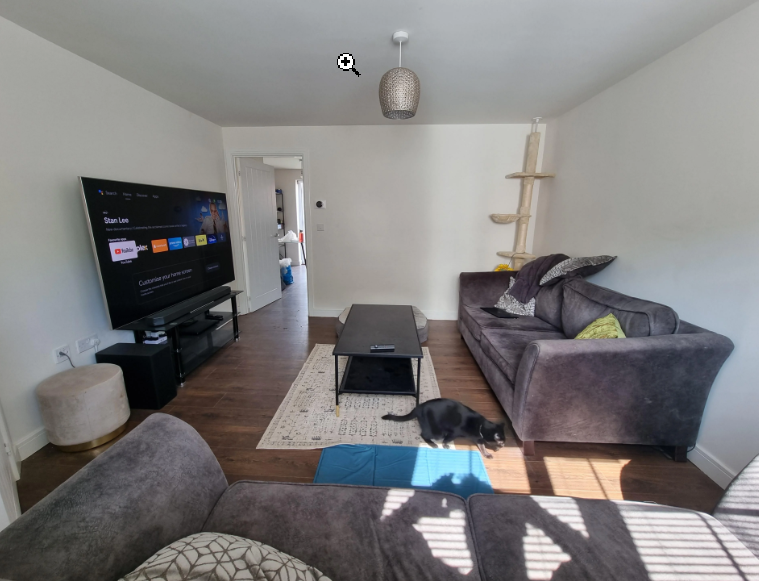
- One user suggests following the Dolby setup guide for speaker placement.
- It’s recommended to have good separation between left and right sound, and to consider the position of the center speaker.
- There’s a discussion about the ideal placement of the front left and right speakers to achieve a wide sound-stage.
8: 7.1 Speaker Placement
The user is moving and is unsure how to set up their 7.1 speaker system in a room with high ceilings.
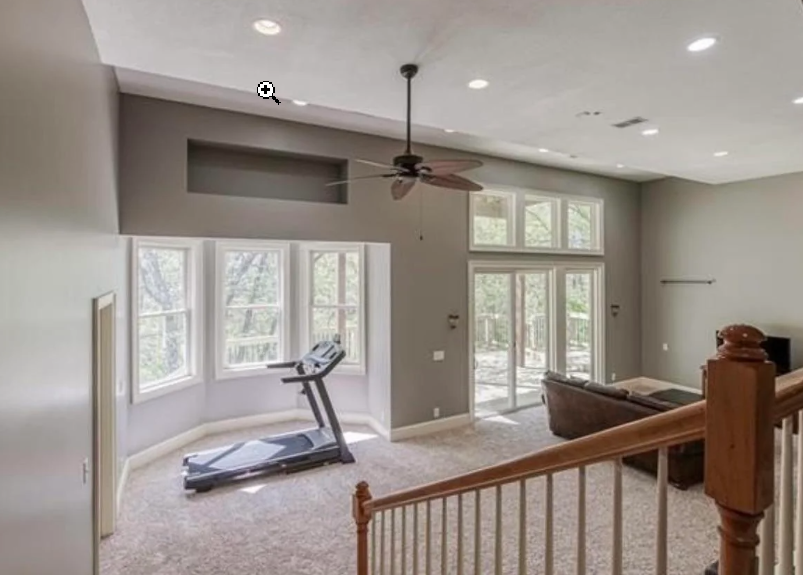
- Many users suggest that the room is not ideal for a surround sound setup due to its size and layout.
- Some users recommend a 3.1 or 5.1 setup instead, while others suggest a 7.1.4 system with Atmos.
- There’s a discussion about the potential of wall-mounted speakers and the challenges of wiring in such a room.
- Some users suggest focusing on a solid stereo setup with a larger display rather than a full surround sound system.
In summary, while there are general guidelines for speaker placement, individual room layouts, furniture, and personal preferences play a significant role in determining the optimal setup. Experimentation and adjustments based on listening experiences are often necessary to achieve the best sound quality.
Factors Affecting speaker placement:
Now that you know the ideal speaker placement for multiple Surround Sound 5.1, 7.1, and Dolby Atmos, you want to jump right into setting the home theater. However, that’s not all; stay put for a little while, as other factors also contribute to speaker placement in the home theater.
Ready to know about them?
Let’s go!
Room size is the Key:
You should check the room parameters and dimensions if you have already set up your surround sound system and don’t find the audio as appealing as your friend’s home theater. The size of the room plays a significant role in speaker placement. The larger the room, the further apart the speakers need to be placed to ensure optimal sound coverage.
Don’t take the room shape for granted:
Now that you have taken care of the room size, and the audio is still not what you expected, some chances let slip the shape of your home theater room. Your home theater room’s shape significantly impacts the speaker placement. The shape and dimensions of a room will determine how sound waves are reflected and absorbed, which will affect the speaker system’s sound quality.
For example, in a square or rectangular room, sound waves will reflect off of parallel walls and cause standing waves, which can result in a boomy or resonant sound. To reduce these effects, speakers should be placed in the corners of the room or along non-parallel walls.
In an irregularly shaped room, the sound waves will reflect in a more complex and random manner, making it more challenging to achieve a balanced sound. In this case, it may be necessary to experiment with different speaker placements and adjust the room’s acoustics, such as adding sound-absorbing materials to walls or ceilings.
Ultimately, the shape of a room will play a significant role in determining the best speaker placement for optimal sound quality.
Furniture:
Did you know that your newly bought table for the table lamp could affect the quality of audio and speaker placement in your home theater?
That’s right!
Furniture placement plays a significant role in the audio quality of the home theater. Large furniture or obstructions would create unwanted reflections, deteriorating the home theater concept. So, in this case, it’s essential to position the speakers to minimize these effects.
Your Speaker placement is about where you sit:
Another essential aspect of speaker placement in your home theater is the listener’s position. You must position the speakers that deliver quality sound to the listener, regardless of where they are in the room.
Conclusion:
If you have reached so far, you must know that setting up a surround sound system is not as nerve-cracking as it may seem. Once you follow the steps for speaker placement, you’ll make the best use of your home theater equipment. You should also remember that multiple factors can influence the surround sound speakers’ placement, including the room size, the furniture placed in the home theater, the ceiling height, and the room’s shape.
So, follow the aforementioned placement tips, and know that a bit of change in the positions won’t hurt. You can always go for a change because change can sometimes be great.

I’m Shaun Conroy, an audiophile & founder of HiFi Audios. Holding a Bachelor’s in Sound Engineering, I bring deep expertise in audio devices and offer insights & recommendations to fellow enthusiasts.

